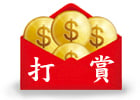这可不是寻常事。大部分工业化国家如今步入衰退,世界还抱一丝希望,期望地球上最活跃的主要经济体可以抑制全球衰退,然而全球经济衰退的预警听上去越来越真实。理由就是:中国尽管有很多储蓄,有两万亿美元外汇储备,但无法回避2008年年中开始的全球需求下降带来的影响。尽管有人大肆吹嘘中国十亿消费者的崛起,但如今中国工业心脏地带受到的冲击将揭穿关于中国已经开始过渡到较少依赖出口和投资、较多依赖家庭消费的新增长模式的虚假概念。渣打银行经济学家格林(Stephen Green)上月写道,"我们也想相信这些话,但实际不是这样的。"他说期望中国的消费拯救世界于衰退是一个白日梦。
以中国为首,整个亚洲都危险地暴露在外部冲击之下。自九十年代末以来,家庭消费占GDP的比重就从大约一半下降到35%。另一方面,亚洲(除了日本)产出的出口份额如今超过45%,比1997-1998年亚洲金融危机前夕高大约十个百分点。美国以借债为动力的贪欲与亚洲对自己生产的商品的极小胃口并举,反映了全球经济的紊乱。
如果北京要为失衡支付最大份的代价,那不足为奇,理由很简单:中国的重新平衡实际上会比美国的更艰苦。对美国家庭而言,如今的危机意味着多储蓄少消费(最近的消费数据显示这种情况正迅速发生)。然而在中国,以价值来计算,家庭消费仅相当于美国的5%,挑战在于维持一个主要靠投资和出口驱动的经济,这意味着要想办法维持工业生产过剩。北京大学经济学教授佩蒂斯(Michael Pettis)表示,1929年的美国也发现自己处于类似处境。"20年代的美国有庞大的贸易盈余,而且拥有当时历史上最庞大的储备。美国避开了全球金融危机了吗?没有。它是最遭殃的国家。从这个意义上看,恰似今天的中国。"
北京意识到它所陷入的增长陷阱。它在宣布中国第三季度经济增长9%之后不久公布5900亿美元刺激计划还有什么别的原因吗?多数人认为中国经济自此大幅度放缓。2009年的增长率可能是百分之七点多,而最新的预测加上了吓人的告诫:"或者会更低"。
北京的刺激方案赢得全球喝彩,尤其是因为它显示了中国领导人不会坐视危机加深。但正如大萧条之初的华盛顿,政策失误会让中国付出沉重代价----特别是如果它们破坏中国经济比其他主要经济体更加倚重的全球贸易体系的话。
然而,在格林看来,中国的刺激方案的两个焦点就是出口和基础设施,卫生和教育开支尽管被列入重点,但不会得到充分的支持。
要明白社会服务与与家庭消费之间的关系,去中国医院看看就知道了。病人要预交钱,到钱用完的时候他们就被赶出去,无论治没治好。根据世界卫生组织数据,中国投入医疗的钱不足GDP的1%,在196个国家的排名中排行第156。同样地,穷人的孩子不交钱不能上学,而且大多数流动人口没有任何职业事故保险。家庭设法把可支配收入的大约25%存起来,以防万一。这不是有益于胡锦涛"和谐社会"的社会契约。
如今的风险在于,可能像大萧条时代的美国,工人会变成经济破产的弃儿。北京坚称保持8%之上的增长率对于吸收数以百万计从内陆农村涌来的工人至关重要。增长率越是低于这个水平线,就越多工人处于失业状态。然而尽管决策者竭力鼓动快速增长,却没有什么措施把这些工人变成另一种大军:有足够社会保护,从而可以少存钱多花钱的新消费者。
北京目前面临的挑战与1989年时十分不同。如今,它必须在全球贸易舞台上保持足够的协调,以免失去重要的海外市场,同时要告诉中国民众,快速的增长并非与生俱来的权利。从根本上说,北京必须提供新的社会契约,以社会保障取代出口驱动型增长引擎,鼓励消费。罗斯福在20世纪30年代在美国进行这项工作,但这项工作花了十年时间。中国领导人会更好过些吗?在90年代末,时任总理朱�基在众多邻国实行货币贬值的时候力挺中国货币;这个决定让中国失去一些出口动力,但中国领导人因此获得承担全球行动责任的美誉。如今的领导人仍然保住这种声誉,但鉴于经济挑战之巨大,几乎可以肯定他们的领导力将在2009年受到终极考验。特别是如果那些悲观主义者预测正确,中国经济停顿的话。
Why Beijing Is In A Risky Place
As the factory to the world, China may be the nation most vulnerable to collapsing global demand.
By George Wehrfritz|
NEWSWEEK
Workers clean the statue of former Chinese leader Mao Zedong
Workers are losing factory jobs at the fastest rate in decades. Automakers-having failed to anticipate today's sales slump-are lobbying politicians for bailouts. The stock market is a crash heap, home prices are down by 35 percent or more in many cities and toxic assets have begun to weigh heavily on banks. America in 2008? Try China, where the global economic downturn now looks certain to end the country's 30-year growth boom, posing the greatest leadership challenge to Beijing since pro-democracy demonstrations threatened one-party communist rule back in 1989.
That's not the conventional take on China-yet. But with most industrialized countries now in recession and countries the world over hoping against hope that the planet's most buoyant major economy might somehow dampen the global downturn, it's a forecast that increasingly rings true. The reasoning goes something like this: China, despite its deep pool of savings and $2 trillion in foreign reserves, is unprotected from the fall in global demand that began in earnest in mid-2008. Notwithstanding all the hoopla about the rise of China's billion consumers, the body blow that's now landing in the industrial heartland will debunk the notion that China has already begun transitioning toward a new growth model based less on exports and investment and more on household consumption. "We would love to believe it too, but it just ain't so," wrote Standard Chartered bank's highly respected China economist, Stephen Green, last month. He says expecting Chinese spending to save the world from recession is "a pipe dream."
With China at the vanguard, Asia as a whole stands dangerously exposed to external shock. Since the late 1990s, household consumption as a share of China's GDP has fallen from roughly half to 35 percent. On the flip side, the share of Asia ex-Japan's output devoted to exports is now more than 45 percent, or roughly 10 points higher than it was on the eve of the 1997�98 Asian financial crisis. When juxtaposed with America's debt-driven gluttony, Asia's puny appetite for the goods it produces reflects a global economy that's staggeringly out of whack. "We are where we are because of massive imbalances that policymakers and politicians have allowed to build up over the last decade," argues Stephen Roach, chairman of Morgan Stanley Asia. "Those imbalances were never sustainable, but the longer they went on the more they seduced people. And now we're paying the ultimate price for that seduction."
The tab, in fact, has yet to be tallied, but don't be surprised if Beijing gets stuck with the biggest portion of the bill for the simple reason that China's rebalancing act is actually much tougher than America's. For U.S. households, today's crisis means saving more and consuming less (recent consumption data suggests that is happening quite rapidly). Yet in China, where total household consumption is just 5 percent of America's by value, the challenge is to sustain an economy that's largely investment- and export-driven, which means finding ways to perpetuate industrial overproduction. Michael Pettis, a professor of finance at Peking University, says America found itself in the same bind back in 1929. "The U.S. in the 1920s ran a huge trade surplus and had the largest reserves in history to that point," he says. "So was the U.S. immune to the global crisis? No. It was the country that suffered the most. In that sense it is exactly like China today."
Beijing realizes the growth trap it's in. Why else would it unveil on Nov. 10 a $590 billion stimulus plan-a package nearly as large as Washington's $700 billion financial bailout-just days after it announced that China's economy expanded by 9 percent in the July�September quarter? The consensus view is that China's economy has slowed markedly since then. Year-on-year growth estimates for 2009 are mostly in the 7s, with the latest forecasts adding the scary caveat, "or less." This month the Royal Bank of Scotland said 5 percent growth in China next year couldn't be ruled out. China's economy, which grew by 11.9 percent last year, hasn't dipped below 6 percent annually since 1990.
Beijing's stimulus plan has won plaudits internationally not least because it indicates that Chinese leaders won't stand idly by as the crisis deepens. But just as in Washington at the beginning of the Great Depression, policy miscues could cost China dearly-especially if they undermine the global trading regime that China's economy relies on more heavily than any other major economy in the world. In the early 1930s, America's self-defeating mistake was to cut off world trade, particularly in the Smoot-Hawley Tariff Act, at a time when it was the leading exporter in a world burdened by massive industrial overproduction. Today, China is the lead exporter, the world again faces massive overproduction, and the mistake Beijing must avoid is moving too hard to sell more manufactured exports at the risk of flooding an already weak market, and triggering a protectionist backlash. That will only push the global market toward deflation-the downward spiral of falling prices leading to falling demand, as stressed consumers wait for even better bargains.
The doubts about China's stimulus plan arise in part because it's all broad strokes with no fine print. Conceptually, however, it seems intended to split the difference between promoting consumption at home, and export sales. It includes commitments to fund rural infrastructure, boost social spending on health and education, and mount an "economic housing" scheme for migrant workers in major cities-all of which, if implemented, would raise household spending over time. But it also contains perks for heavy industry, value-added tax cuts for the export sector and lending provisions that will channel bank funding to state enterprises engaged in road and rail construction and away from private companies. "The two focuses are definitely exports and infrastructure. That's what we're getting from everything we're picking up," says Green. "And that the health and education spending, although it has been listed as one of the eight priorities, is not going to be [well] supported." Economists estimate that only a quarter of the $590 billion is new money as opposed to previously announced spending, future tax cuts and unfunded mandates passed down to local governments. There's reason to expect that much of the promised social spending-and the consumer empowerment it represents-may not materialize. One warning signal is that Beijing has entrusted much of the safety net stuff to the provinces, which historically have put a low priority on building schools, unless the order to do so comes with earmarked funding from Beijing. One new concern: local tax revenues are shrinking due to the economic downturn. Roach says investment in the social safety net would "reduce the precautionary saving that is inhibiting broad-based consumption growth across the nations [of Asia]," though he adds: "China has from time to time flirted with that, but they really have dragged their feet."
To understand the linkage between social services and household consumption, visit a Chinese hospital. At check-in, patients are required to deposit money up-front, and when that funding runs dry they're tossed out onto the street, healthy or not. According to the World Health Organization, China spends less than 1 percent of its GDP on health care, which ranks it 156th out of 196 nations the U.N. agency tracks. Likewise, poor kids can't attend school without paying fees, and most migrants are uninsured against job-site accidents at any price. Families cope by saving an estimated 25 percent of their disposable income, just in case.
That isn't a social contract conducive to the "harmonious society" President Hu Jintao has advocated since 2006, or so concludes a new report co-produced by the United Nations Development Program and the China Institute for Reform and Development. It calls on China to overhaul its social-welfare system to provide universal basic health care, education, unemployment and retirement benefits for the country's 1.3 billion people. It stresses the need to vest forgotten segments of society including farmers, migrant workers and the poor. And it claims that such expenditures-which it estimates would cost $55 billion a year-actually offer a bigger bang for the buck than would the construction of new roads, railways and bridges.
The risk today (and it's one that's already materializing in a mounting exodus from shuttered factories in Guangdong province) is that these workers could, like the boxcar-hopping hobos of America's Depression era, become the flotsam and jetsam of the economic bust. Almost since China's reforms began three decades ago, Beijing insisted that sustaining economic growth rates above 8 percent was paramount to employing the millions of workers pouring in from inland villages. The further growth drops below that level, the higher the percentage of an estimated 15 million workers entering the labor force each year lands in the ranks of the unemployed. Yet even as policymakers stoked fast growth with every means at their disposal, little was done to transform these workers into foot soldiers of a different sort: new consumers with sufficient social protections to save less and spend more.
The prescription for change has been obvious since the late 1990s. It includes balanced growth between booming east and lagging west; efforts to narrow the yawning income gap between China's superrich and everyone else; and policies that channel the massive earnings logged by the state-owned conglomerates that dominate China Inc. back into government coffers to fund social spending. Yet campaigns with names like Go West meant to spur investment in the hinterland never amounted to more than propaganda exercises, and a long-mulled plan for the government to charge state companies dividend on their huge profits remains a small-scale experiment. In October, Standard Chartered noted a "gulf between aspirations and actual policies" illustrated by Beijing's long-standing bias toward investment and exports, and support for "state-protected oligopolies." Pettis argues that Beijing's persistent mercantilism has prepared it for the wrong crisis-specifically, an external debt shock akin to the one that ravaged Asia in 1997-98, against which China's huge savings and foreign reserve pools would make it "superbly protected." Yet as with America in 1929, China is the nation most exposed in the world to a collapse in global demand today.
As such, Beijing finds itself in a fix as 2008 winds to an ignominious close. Export promotion offers a viable short-term means of keeping the factories of China running-yet grabbing more market share amid a global downturn is the surest way to incite protectionism. During the recent gathering of G20 leaders in Washington, much public emphasis was placed on shoring up the global financial architecture and defending free trade. Yet former New Zealand prime minister Mike Moore, who headed the World Trade Organization from 1999 to 2002, believes the backroom talks focused on the imperative that Asia not try to export its way out of today's crisis. It was "the elephant in the room; how China, and to a lesser extent India and the Southeast Asians, must become consuming countries," he says. "It's overwhelmingly in [their] interest to become a lot less reliant on exports, and it also does right by the people they represent. Not to do it could trigger something that's very, very unpleasant." Global trade slumped 70 percent in the 1930s, and any return to the virulent economic nationalism of that era "would turn crisis into catastrophe," warns Moore.
That presents Beijing with a leadership challenge very different from the one it confronted with tanks and soldiers in 1989. Today, it must work to maintain enough harmony in the global trade arena so as not to lose access to vital overseas markets, while telling the Chinese people that fast growth isn't their birthright. In essence, Beijing must offer a new social contract in which consumption bolstered with a social safety net replaces the export-driven growth engine that has powered China's economy for 30 years. FDR did that in America in the 1930s, but it took a decade. Might China's leaders fare any better? In the late 1990s, then Premier Zhu Rongji refrained from devaluing China's currency when many of its neighbors did so; the decision lost China some export momentum but gained its leadership a reputation for responsible global action. Today's leaders have maintained that reputation, but given the enormity of the economic challenges at hand, the only safe bet is that their helmsmanship will be tested to the extreme in 2009. Especially if the pessimists are correct and China's economy grinds to a halt.
(文章仅代表作者个人立场和观点)
来源:美国新闻周刊
短网址: 版权所有,任何形式转载需本站授权许可。 严禁建立镜像网站.
【诚征荣誉会员】溪流能够汇成大海,小善可以成就大爱。我们向全球华人诚意征集万名荣誉会员:每位荣誉会员每年只需支付一份订阅费用,成为《看中国》网站的荣誉会员,就可以助力我们突破审查与封锁,向至少10000位中国大陆同胞奉上独立真实的关键资讯,在危难时刻向他们发出预警,救他们于大瘟疫与其它社会危难之中。








